A Sunday Trip to the Olympic Sculpture Park
Taking a break from the heavy news and politics, we take an”expedition” every Sunday in Seattle. Last weekend we went to the Wooden Boat Center and went rowing. This Sunday we went to the Olympic Sculpture Park.
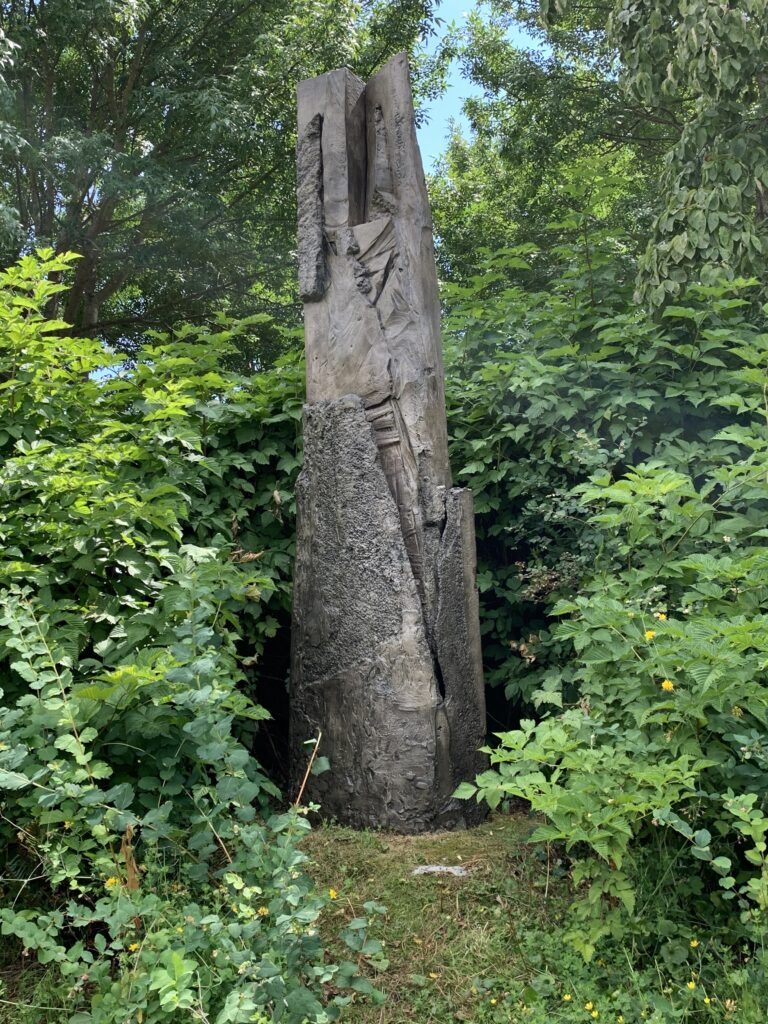
Here is Beverly Pepper’s Persephone Unbound. 1999. “The abstract language of form that I have chosen has become a new way to explore an interior life of feeling …I wish to make an object that has a powerful presence, but is at the same time inwardly turned, capable of self-absorption.” Beverly Pepper just died on February 5, 2020 in Todi Italy at the age of 97.
We haven’t been back to Sculpture Park for quite a long time, and it is stunning to see how much the vegetation has matured. Of course the art is almost all white modernists, but it looked great there, and it marks the extraordinary generosity of Seattle’s culture supporters. Hopefully SAM will be planning to diversify the artists as soon as possible, given the new awareness of the need to do that. There is one Latinx artist, Teresita Fernandez who created a glass bridge ( which is very hard to photograph), and all the signs included Lutshotseed and native practices.
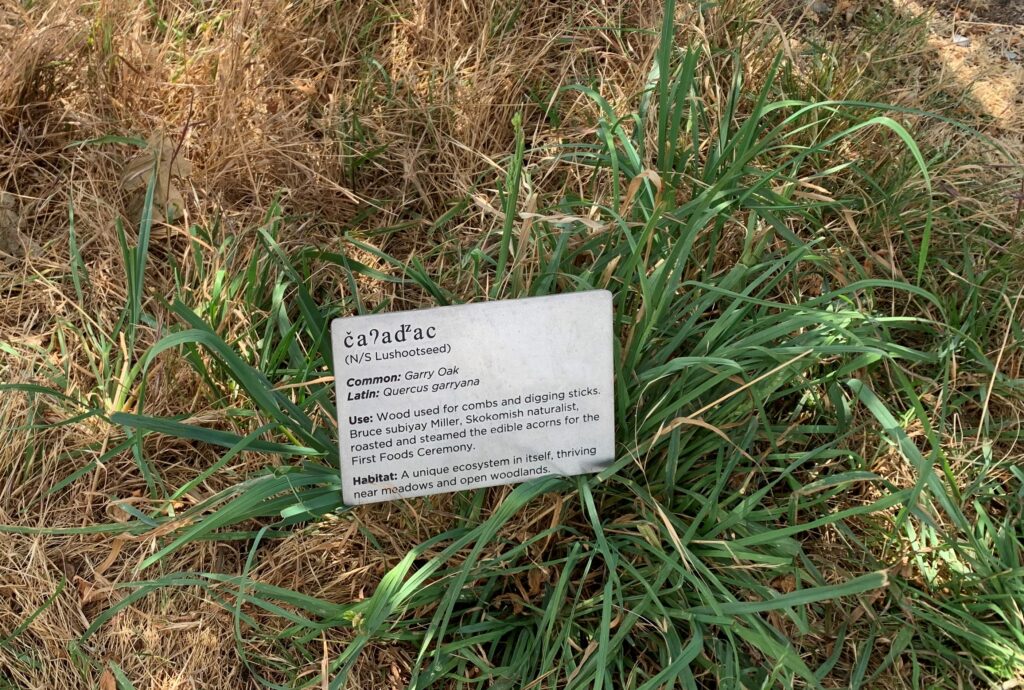
The extraordinary accomplishment to take a derelict toxic waste site on a steep hillside that is crossed by a highway and a train track into an uplifting green space in the center of the city is to be honored. The museum literally moved mountains to create it. So here are a few images, just to inspire you to visit.
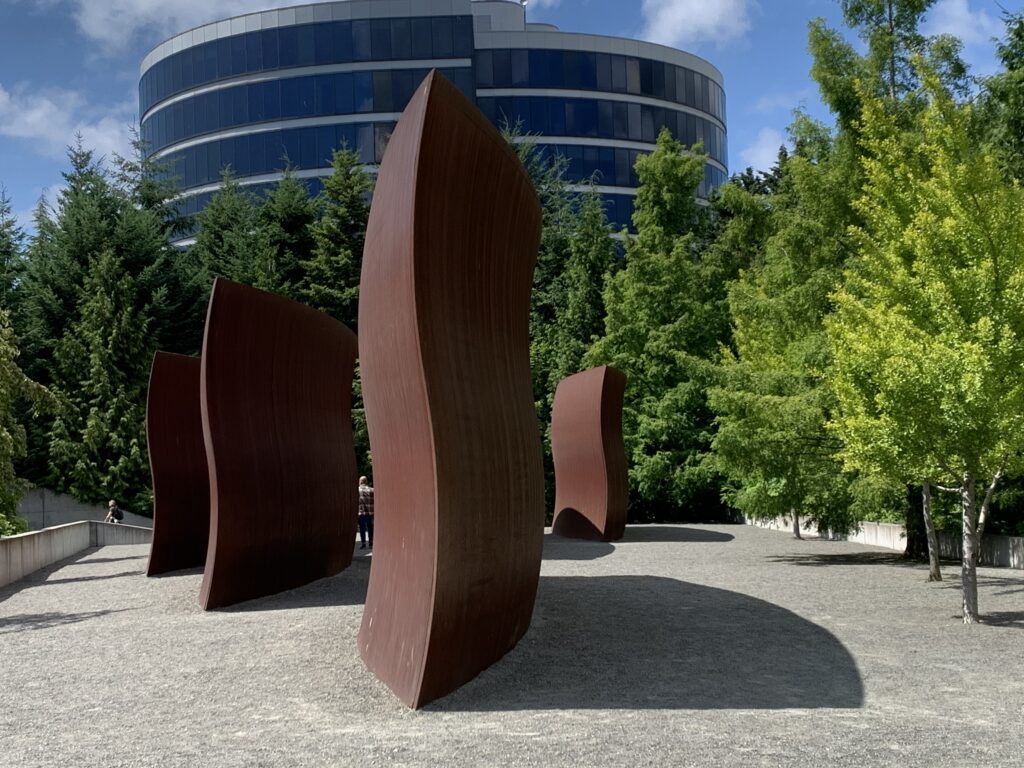
Richard Serra’s Wake 2004 This piece by Serra evokes giant ships going through the sea. It is of course overwhelming, but I certainly like this installation, compared to some of his work in public places. He has a working class background and grew up around a waterfront in San Francisco, where his father worked in a shipyard, so he has a connection to this subject. I met Serra years ago, when he installed a piece called One Ton Prop, House of Cards, at the Rhode Island School of Design, where I was part of the curatorial staff. It was traumatic because the House of Cards fell down, each “card” was 500 pounds!
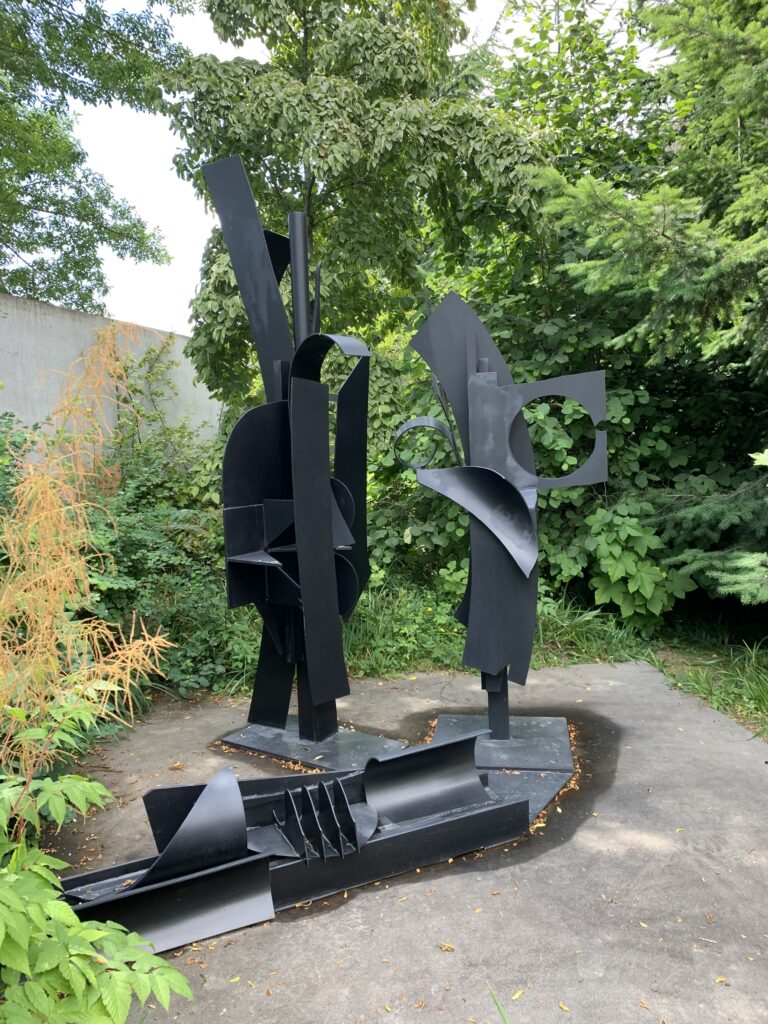
Louise Nevelson’s Sky Landscape I 1976 – 83 sits in corner of the park with now a lush background. We really enjoyed this piece and thinking about Nevelson. She was such a distinctive presence in her later years with her triple false eyelashes. This piece is distinctly different from what she is mainly known for. But it is black. She says “I fell in love with black; it contained all color, it wasn’t a negation of color …blackis the most aristocratic color of all … you can be quiet and it contains the whole thing.”
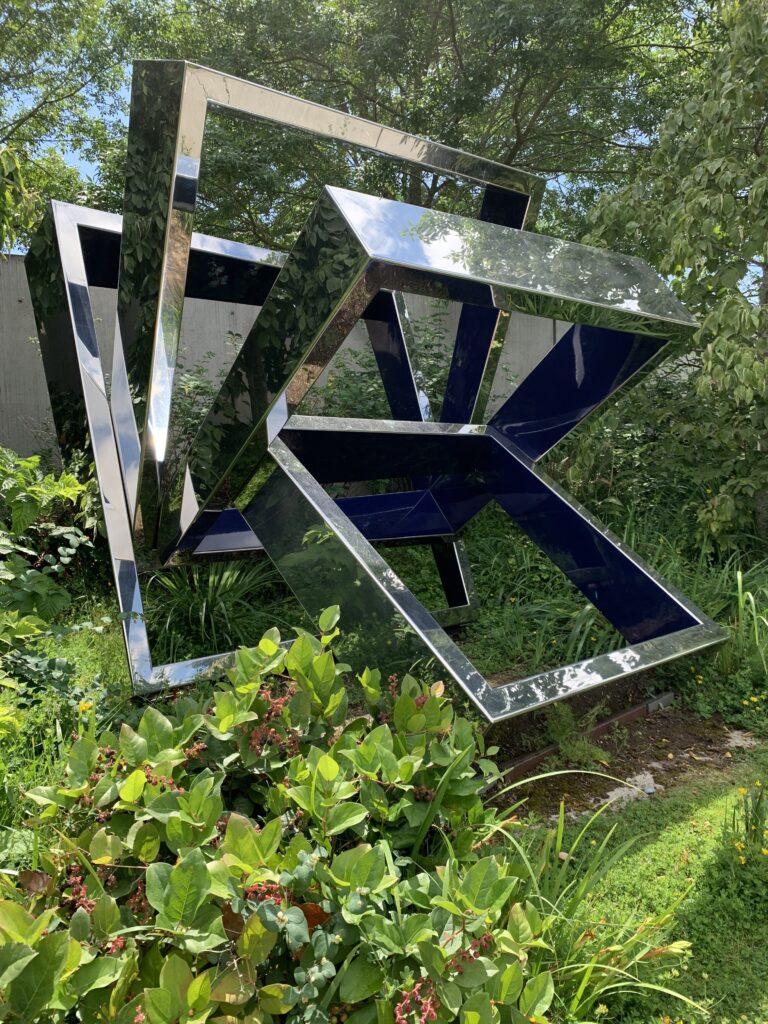
Here is another work by Beverly Pepper Perre’s Ventaglio III 1967 from her earlier phase, more angular, but still provocative: she said “the idea is that from whatever angle you view it, the voids seem filled and the solids seem empty.
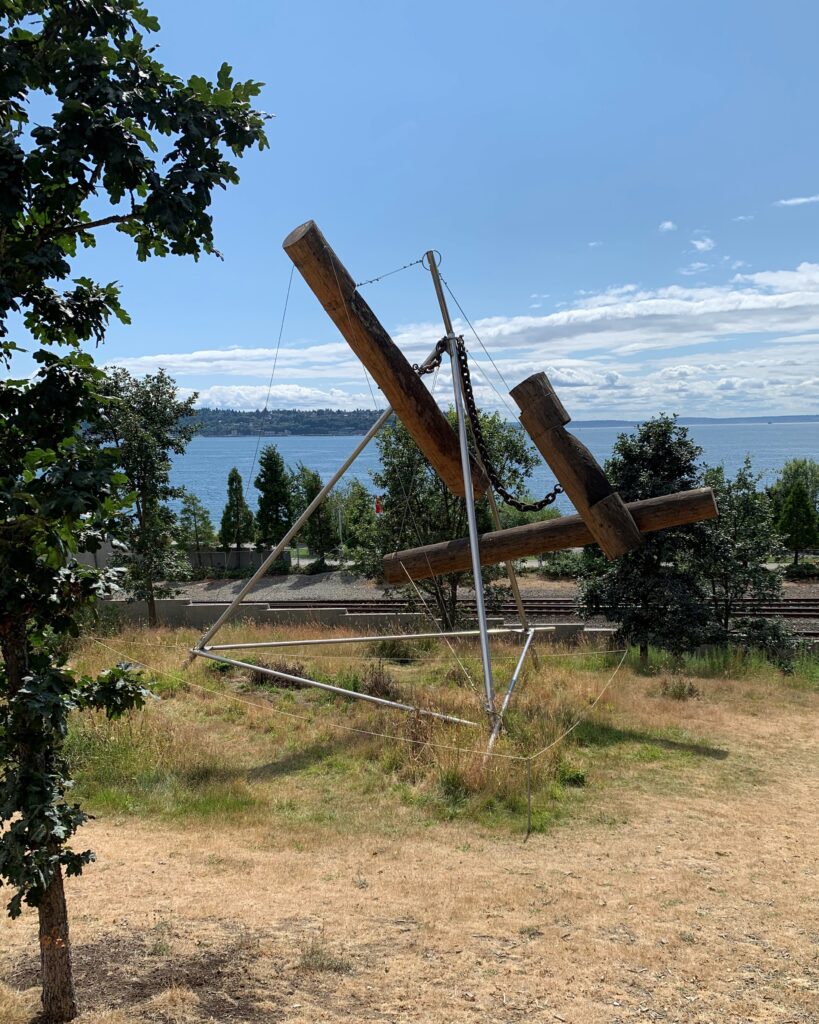
Mark Di Suvero Bunyan’s Chess 1965 “Unity and joy. That’s why I like to suspend elements from the beams of my works, so they can interact with the wind and other forces.” I love this work with its great chunks of wood. Di Suvero had an accident early in life and was disabled but never stopped making sculpture.
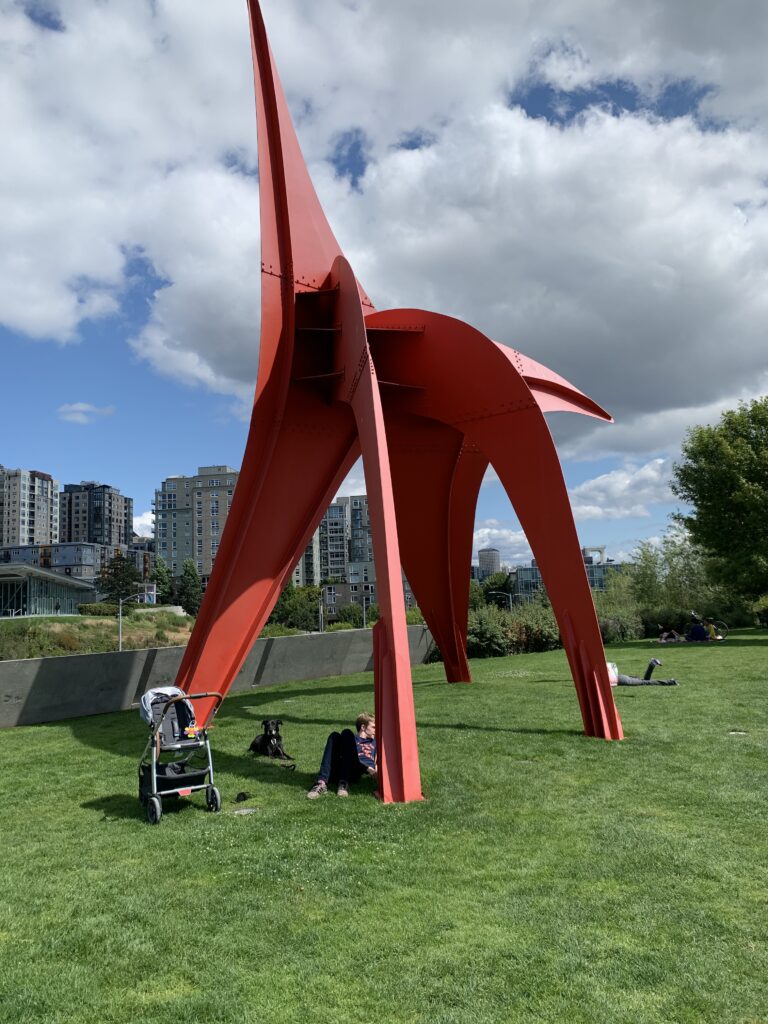
Alexander Calder Eagle 1971, the icon of the park needs no explanation.
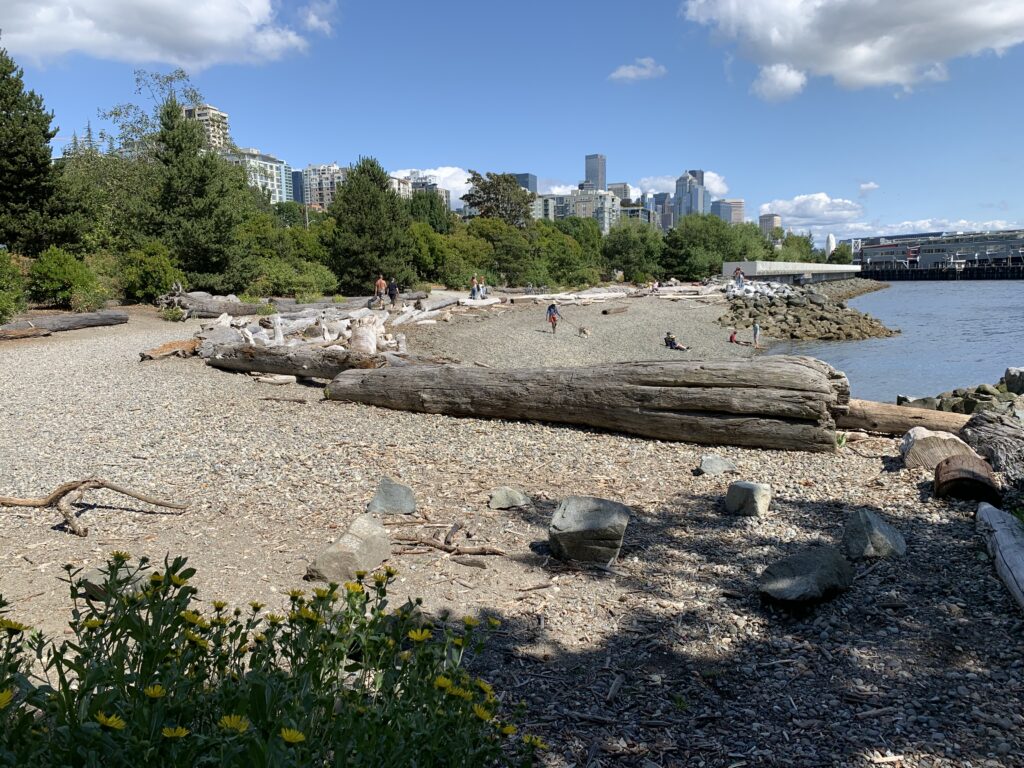
The shoreline is intended to be a safe place for young salmon to grow up. I don’t know if that is successful or not. It apparently has an undrwater bence for near shore habitat. The pocket beach was created by means of excavation, driftwood, beach grass and pines.
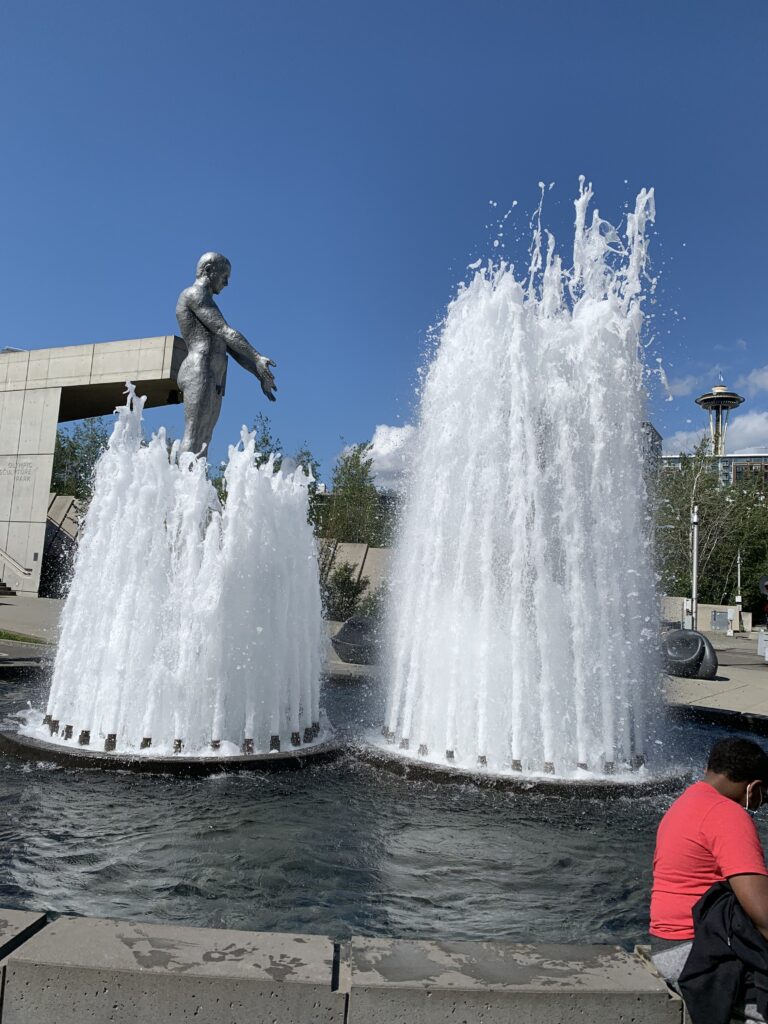
Louise Bourgeois sculpture Father and Son 2004-2006 at the South end of the park is another iconic work as well as her chairs.
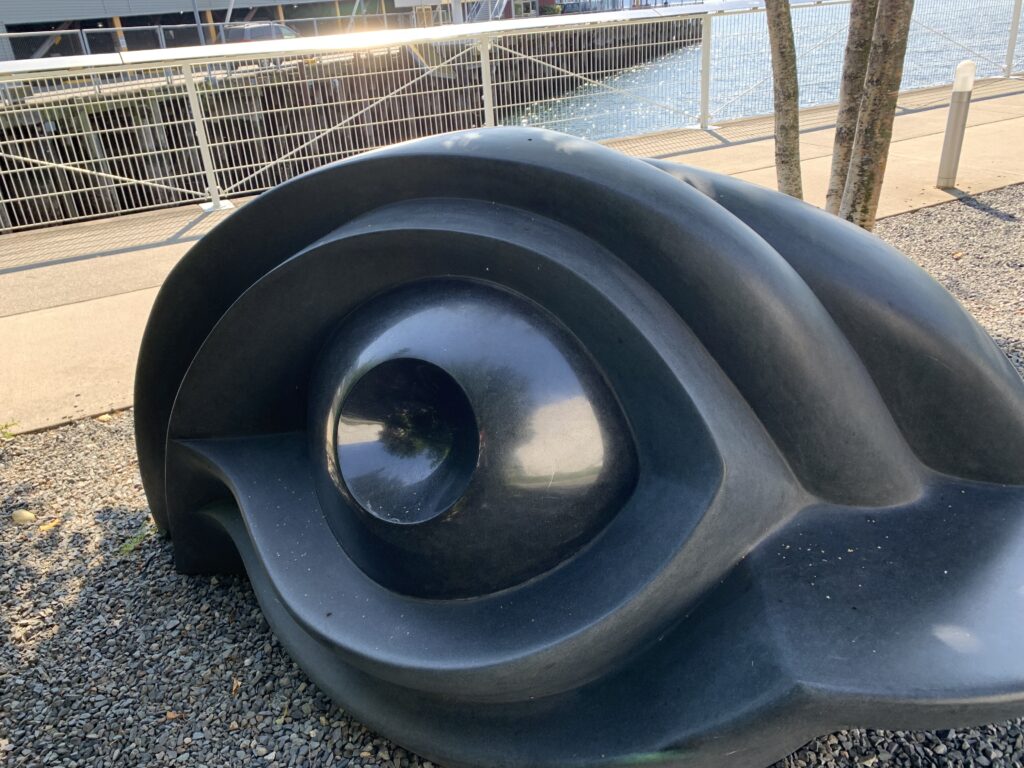
Of course, there is a lot more sculpture that I didn’t include here. I suggested to them to install the boxes from CHOP here! Wouldn’t that be a great change of pace. There is also the Vivarium by Mark Dion, which was closed. I always felt that they should have asked Buster Simpson to do a piece there instead. He has been doing sculpture that incorporates natural process for decades. And now of course there are lots of new approaches to public art. The pavillion that is a changing installation site for large projects was also closed. And we somehow missed the Anthony Caro! But it was a great Sunday.
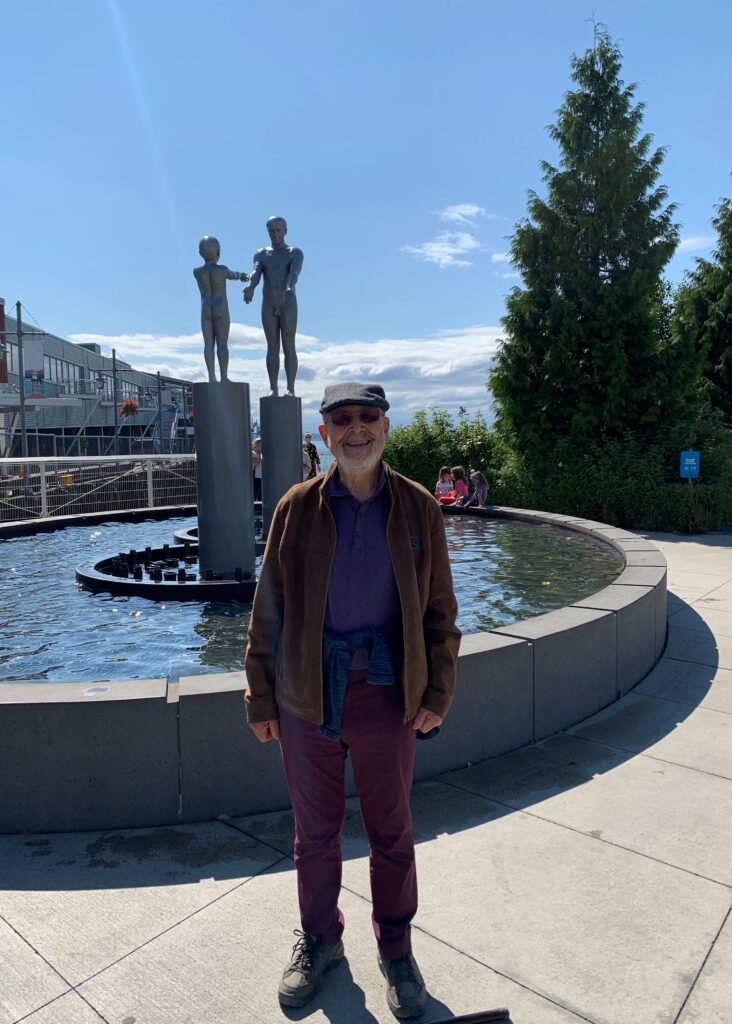
This entry was posted on July 13, 2020 and is filed under Uncategorized.








